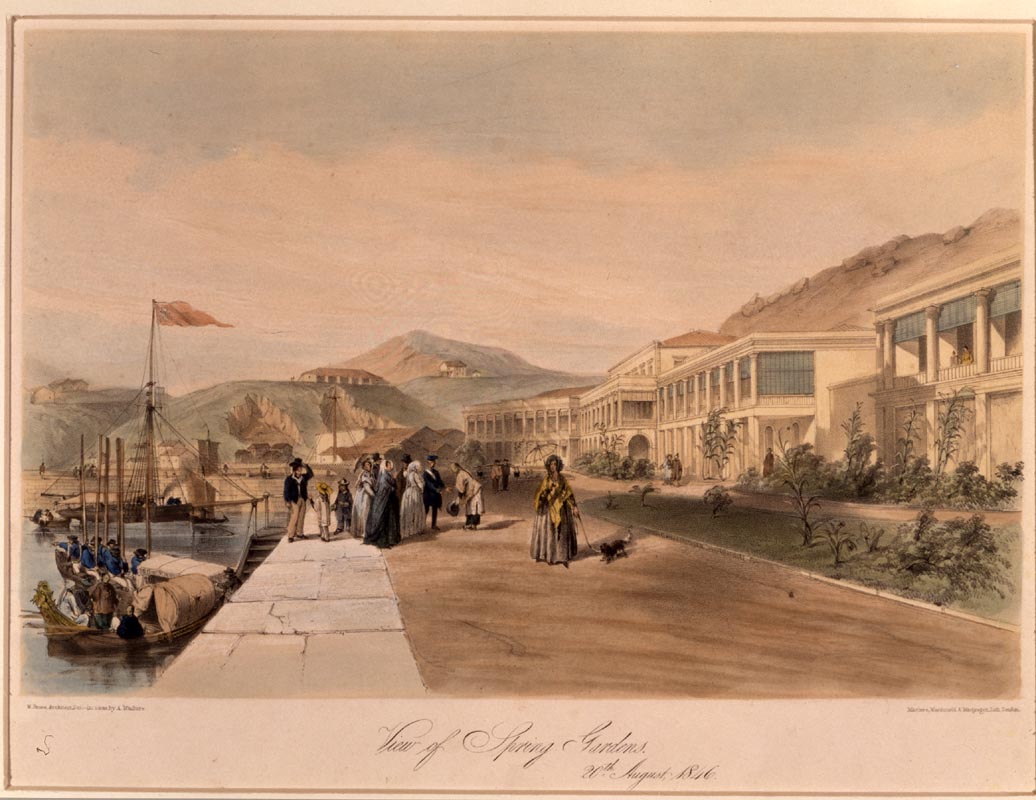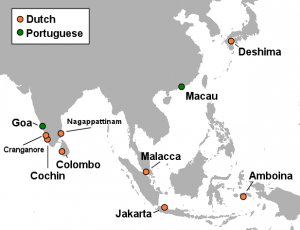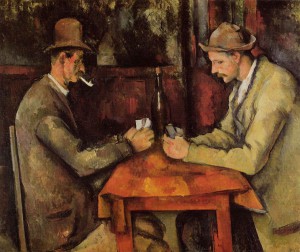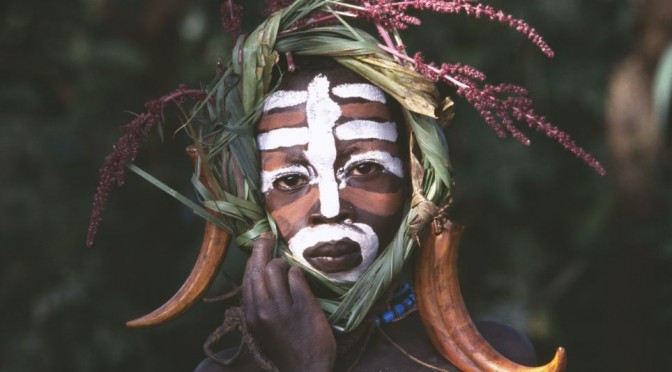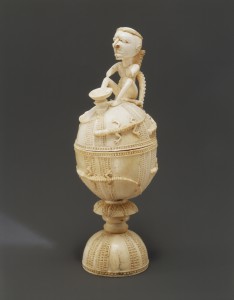View of Spring Gardens
Hong Kong, 20th August 1846
Painting by Murdoch Bruce, lithograph by A. Maclure
This painting by Murdoch Bruce and A. Maclure depicts a scene in 19th Century Hong Kong. Initially, it is difficult to tell that this piece of work is portraying a garden in Hong Kong, but through the smallest of indicators, we are given insight into where this is and the social dynamics of the time.
As the British had taken full control of Hong Kong Island after the First Opium War in 1841, the British had immense influence on the art and architecture of Hong Kong. Being the colonisers, that also meant that the British were seen as being of a higher social and economic status as compared to the Chinese locals.
To see the heavy influence that the British had on the architecture, we can take reference to the painting by Murdoch Bruce and A. Maclure. In this painting, the buildings take on a more European style and is lacking in traditional Chinese architecture. The roofs are simple and flat, having no roof ornaments such as lions and dragons, which are often associated with Chinese architecture. In addition, there is a use of columns, which has its origins in ancient Greece.
Besides the architecture, there is a heavy presence of the British colonisers, as artists at the time preferred to focus mainly on the foreign occupants. The foreigners are depicted as wealthy, being dressed in elaborate pieces of clothing. The women are seen wearing long and decorated dresses that are tapered at the waist to accentuate their figures and are seen adorning large and curly hairstyles. The local women depicted in the painting are depicted as being of a lower socio-economic status. Unlike their colonisers, they wear simple clothing and have their hair tied back in a simple bun.
The men are depicted in a similar way whereby the British men are wearing long coats and top hats while the local men are in traditional Chinese clothing and have their hair tied back in a plaid and have their head shaven. In addition, we can see in the painting that the British are seen as superior to the locals as there is a local Hong Kong man “kowtow”-ing to the foreigners. (To “kowtow” means to bow in respect to one’s superiors)
